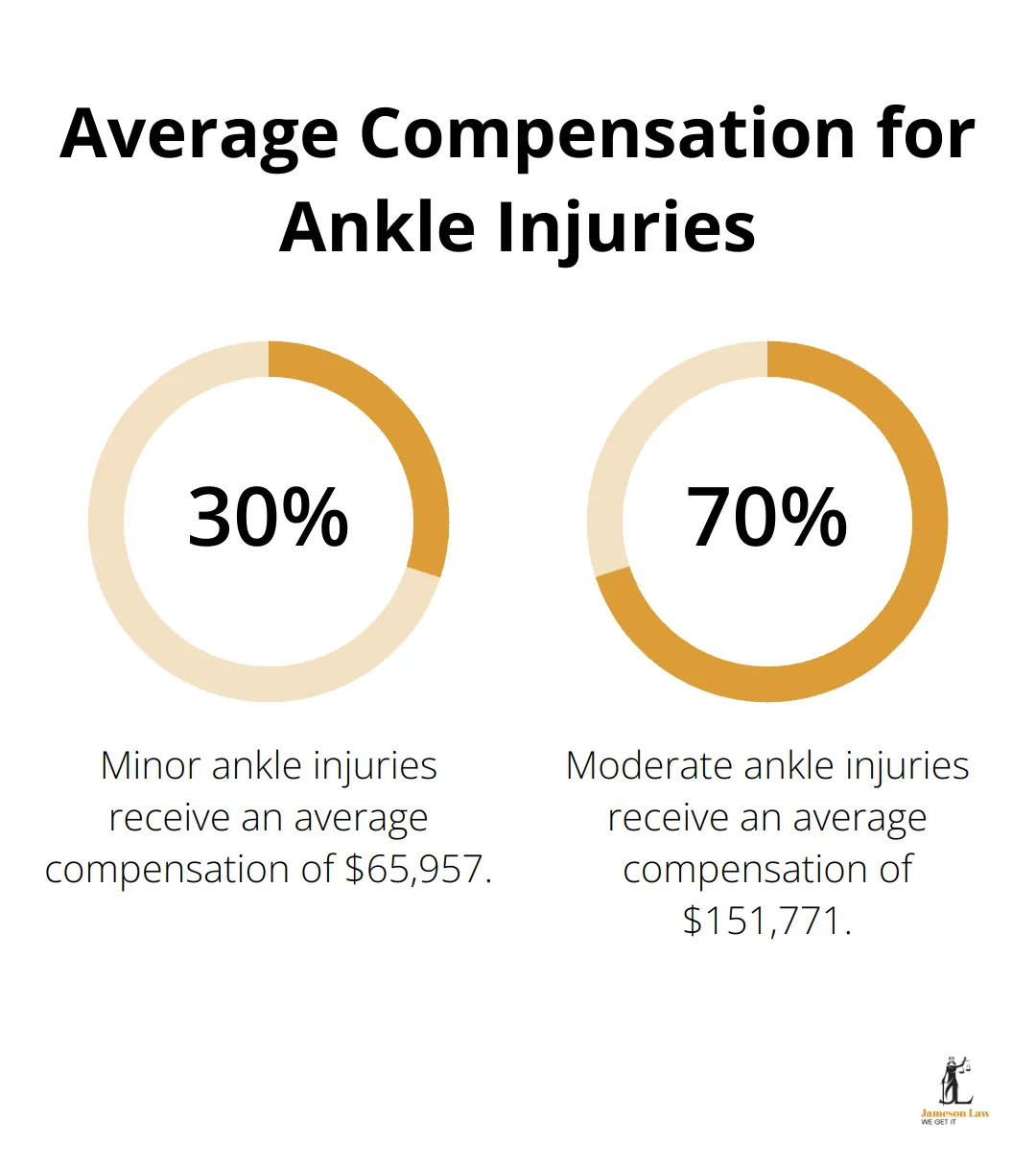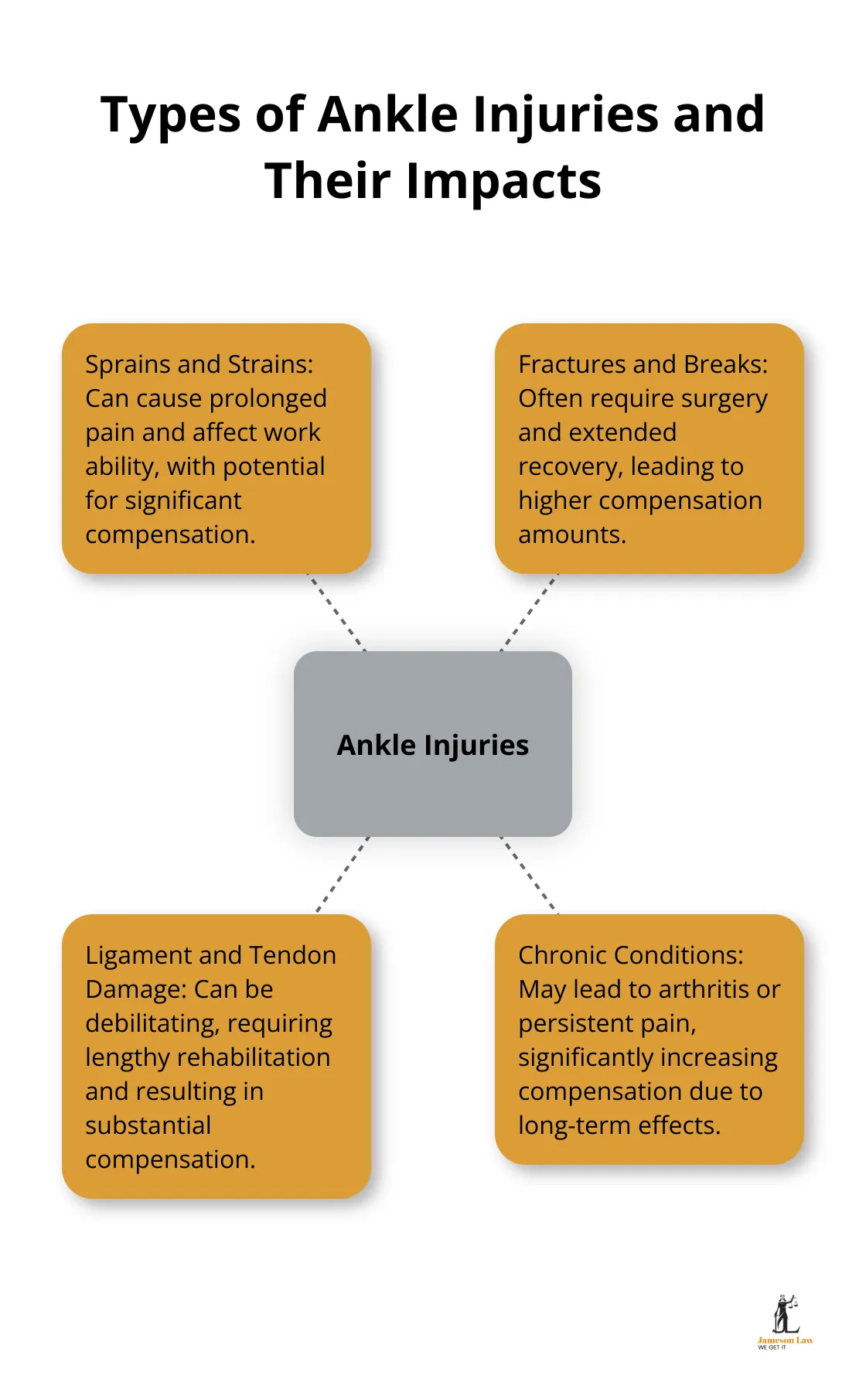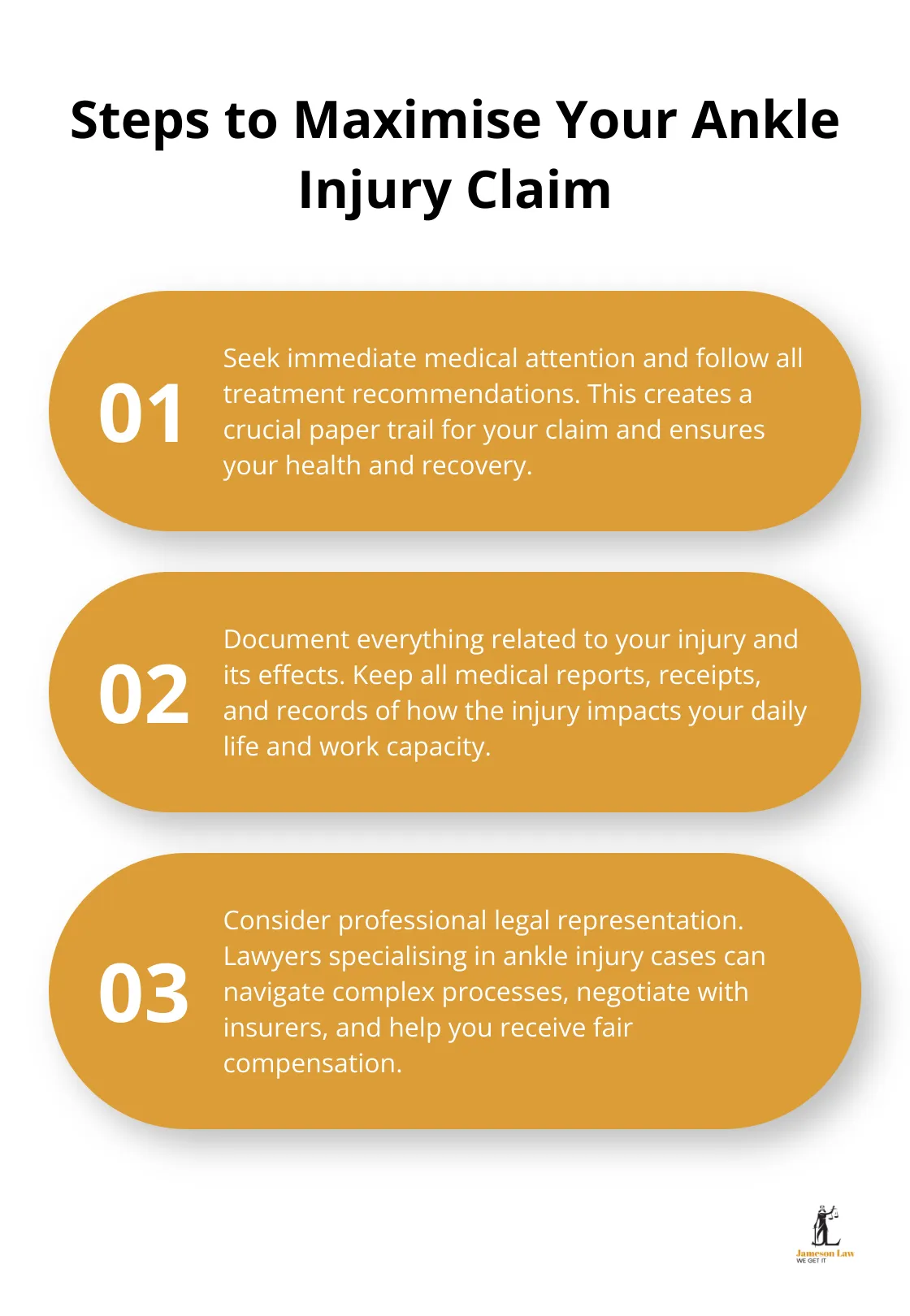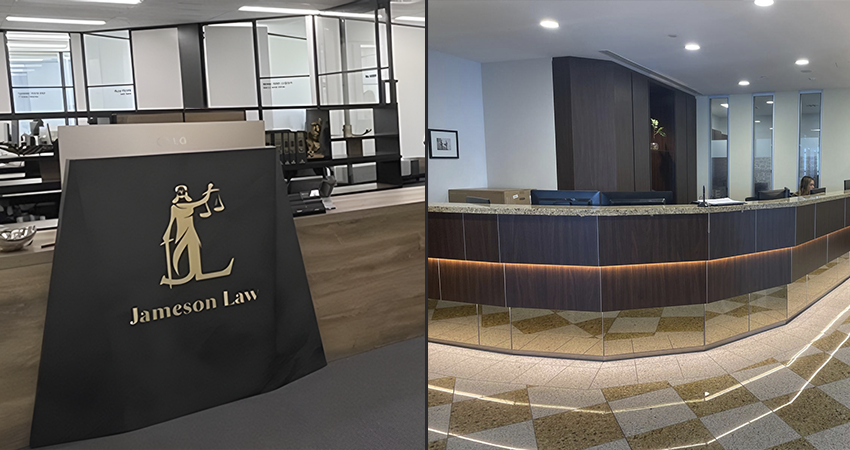Ankle injuries can be painful, debilitating, and costly. Many Australians wonder about the potential compensation they might receive for such injuries.
At Jameson Law, we understand the complexities of ankle injury claims and their impact on your life. While an ankle injury compensation calculator for Australia might provide a rough estimate, the actual amount varies based on several factors.
This post will explore the key elements that influence ankle injury compensation and guide you through the claiming process.
What Affects Ankle Injury Compensation?
Injury Severity and Long-Term Impact
Ankle injury compensation in Australia varies significantly based on several factors. The severity of your injury stands as a primary determinant of your potential payout. Minor sprains might result in smaller compensations, while complex fractures requiring surgery could lead to substantial sums. The State Insurance Regulatory Authority (SIRA) in NSW provides information on compensation payouts, who can claim, how payouts are calculated, and how to get free legal help. A whole person impairment (WPI) compensation calculator can help estimate your lump sum payout range.
Long-term effects also play a significant role. Chronic pain or arthritis resulting from your injury will factor into your compensation. These ongoing complications often increase the final settlement amount considerably.
Work and Lifestyle Disruption
Your ability to work and maintain your lifestyle after the injury significantly influences your compensation. If your ankle injury prevents you from returning to your job or forces you to switch to a lower-paying role, you may receive compensation for loss of earnings (both current and future).
Medical Costs and Rehabilitation
Treatment and recovery expenses form a substantial part of your claim. This includes immediate medical care, surgeries, physiotherapy, and any necessary assistive devices. It’s essential to keep all receipts and medical reports as they serve as vital evidence for your claim.
In some instances, ongoing medical care can significantly increase the compensation amount. Compensation often covers not just past medical expenses but also projected future medical needs related to the ankle injury.
Age and Pre-existing Conditions
Your age and any pre-existing conditions affect your compensation. Younger individuals might receive higher payouts due to longer projected work lives and potential ongoing issues. However, pre-existing conditions don’t necessarily reduce your claim. If your ankle injury exacerbates a pre-existing problem, this can be included in your compensation assessment.
Each case presents unique circumstances. While these factors provide a general framework, the specifics of your situation ultimately determine your compensation. Expert legal representation ensures all aspects of your injury and its impacts receive thorough consideration and presentation in your claim.

As we move forward, let’s examine the various types of ankle injuries and their potential compensation amounts. This information will help you understand what you might expect based on your specific injury.
Ankle Injury Types and Potential Compensation

Sprains and Strains
Sprains and strains rank among the most common ankle injuries. These often result from twists or overextension. While generally less severe, they can still lead to significant compensation, especially if they cause prolonged pain or affect your work ability.
The average compensation payment for minor injuries was $65,957, while for moderate injuries it was $151,771. The exact amount depends on recovery time and impact on daily activities.
Fractures and Breaks
Ankle fractures and breaks are serious injuries that often require surgery and extended recovery periods. These injuries can significantly impact your ability to work and perform daily tasks, leading to higher compensation amounts.
The Personal Injury Lawyers can provide information about your rights when claiming ankle injury compensation. In severe cases, where the injury leads to long-term complications or inability to return to work, compensation can be substantial.
Ligament and Tendon Damage
Injuries to ankle ligaments and tendons can be particularly debilitating and often require lengthy rehabilitation. These injuries can range from partial tears to complete ruptures, with compensation varying accordingly.
For moderate ligament or tendon injuries, compensation can be significant. Severe cases, especially those requiring surgical intervention or resulting in permanent instability, may see higher payouts.
Chronic Conditions and Long-Term Effects
Some ankle injuries lead to chronic conditions like arthritis or persistent pain syndromes. These long-term effects can significantly increase compensation amounts due to ongoing medical expenses and reduced quality of life.
Compensation for chronic conditions resulting from ankle injuries can be substantial, depending on the severity and impact on your life. In cases where the injury leads to permanent disability or inability to work in your chosen field, compensation can be considerable.
It’s important to note that these figures are general estimates. Each case is unique, and actual compensation amounts can vary widely based on individual circumstances. Factors such as your age, occupation, and the specific details of your injury all play roles in determining the final compensation amount.
The next chapter will guide you through the process of claiming ankle injury compensation in Australia, including important time limits and evidence requirements.
How to Claim Ankle Injury Compensation in Australia
Time Limits for Claims
Australia imposes strict time limits on personal injury claims, including ankle injuries. These limits vary by claim type and location. For ankle and foot injury workers compensation claims, they should generally be submitted as soon as possible after the injury occurs.
Failure to meet these deadlines can seriously jeopardise your right to compensation. It’s advisable to seek legal advice promptly after your injury to avoid missing critical deadlines.
Gathering Evidence
Strong evidence forms the backbone of a successful ankle injury claim. This includes:
- Medical reports detailing your injury, treatment, and prognosis
- Photographs of the injury and accident scene (if applicable)
- Receipts for medical expenses and travel costs for treatments
- Incident reports (for workplace or public place injuries)
- Witness statements
- Documentation of how the injury affects your daily life and work capacity
A comprehensive evidence collection can significantly strengthen your case.
Negotiating with Insurers
Dealing with insurance companies often presents challenges. They frequently attempt to minimise payouts, with initial offers often lower than your potential entitlement. In 2022, the Australian Financial Complaints Authority reported that 70% of general insurance disputes concerned claim amounts.
Effective negotiation requires a clear understanding of your injuries, their impact on your life, and the compensation you seek. Professional legal representation can substantially improve your negotiating position and potential outcome.
Legal Representation
While self-representation is possible, professional legal representation often leads to better outcomes. A study by the Insurance Council of Australia found that claimants with legal representation received (on average) 3.5 times more compensation than those without.
Legal experts specialise in personal injury claims and possess a deep understanding of ankle injury cases. Their expertise ensures thorough consideration and presentation of all aspects of your injury and its impacts in your claim. Many firms (including Jameson Law) operate on a No Win No Fee basis for personal injury claims, making legal representation accessible without upfront costs.
Maximising Your Claim
To maximise your ankle injury compensation:
- Seek immediate medical attention and follow all treatment recommendations
- Document everything related to your injury and its effects
- Don’t rush to accept the first offer from an insurance company
- Consider professional legal representation to navigate the complex claims process

The claiming process can take time and complexity. Thorough preparation and patience are essential for achieving the best possible outcome for your ankle injury compensation claim.
Final Thoughts
Ankle injuries impact your life significantly, affecting work, daily activities, and overall well-being. An ankle injury compensation calculator for Australia provides rough estimates, but actual compensation depends on your unique situation. Proper medical care immediately after an injury creates a crucial paper trail for your claim and ensures your health and recovery.
Legal professionals specialising in ankle injury cases navigate complex processes, negotiate with insurers, and help you receive fair compensation. Their knowledge of recent case outcomes and compensation trends can maximise your claim. We at Jameson Law understand the challenges you face after an ankle injury and offer expert guidance throughout your claim process.
Time matters in ankle injury claims in Australia. Acting promptly and seeking professional legal advice positions you for the best possible outcome. Our team of experienced personal injury lawyers commits to achieving the best result for you, ensuring thorough consideration of all aspects of your injury and its impacts in your claim.










